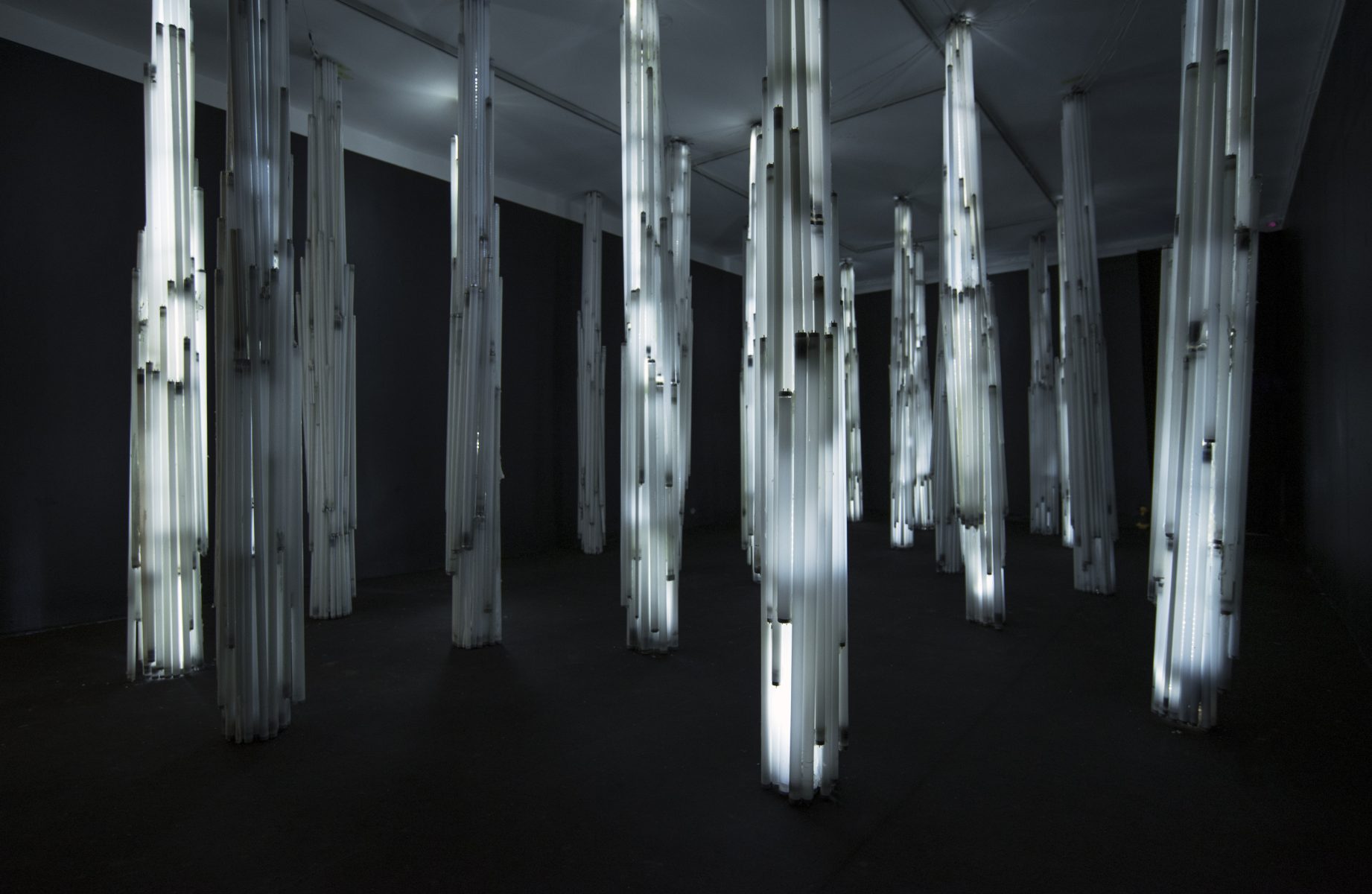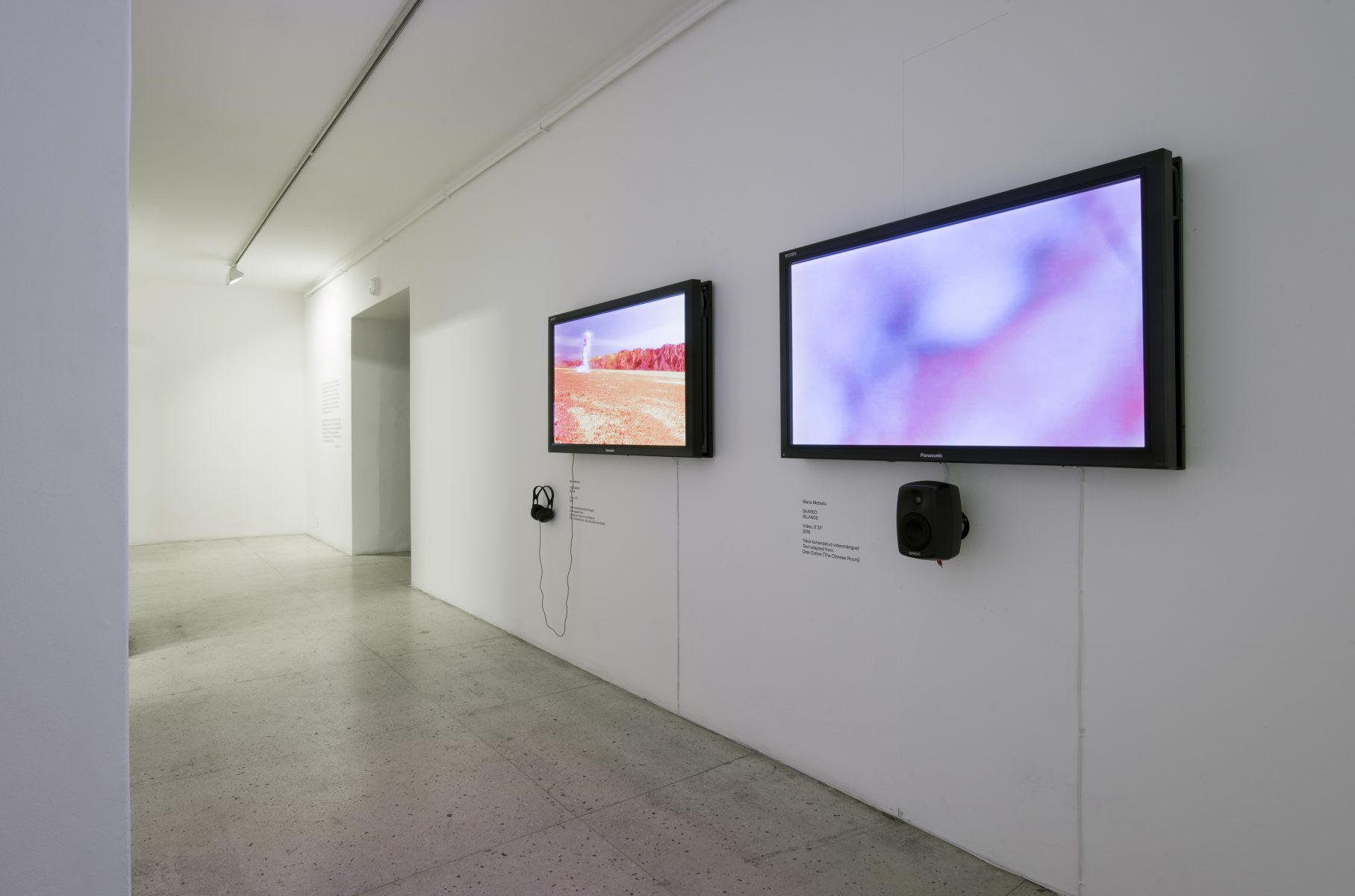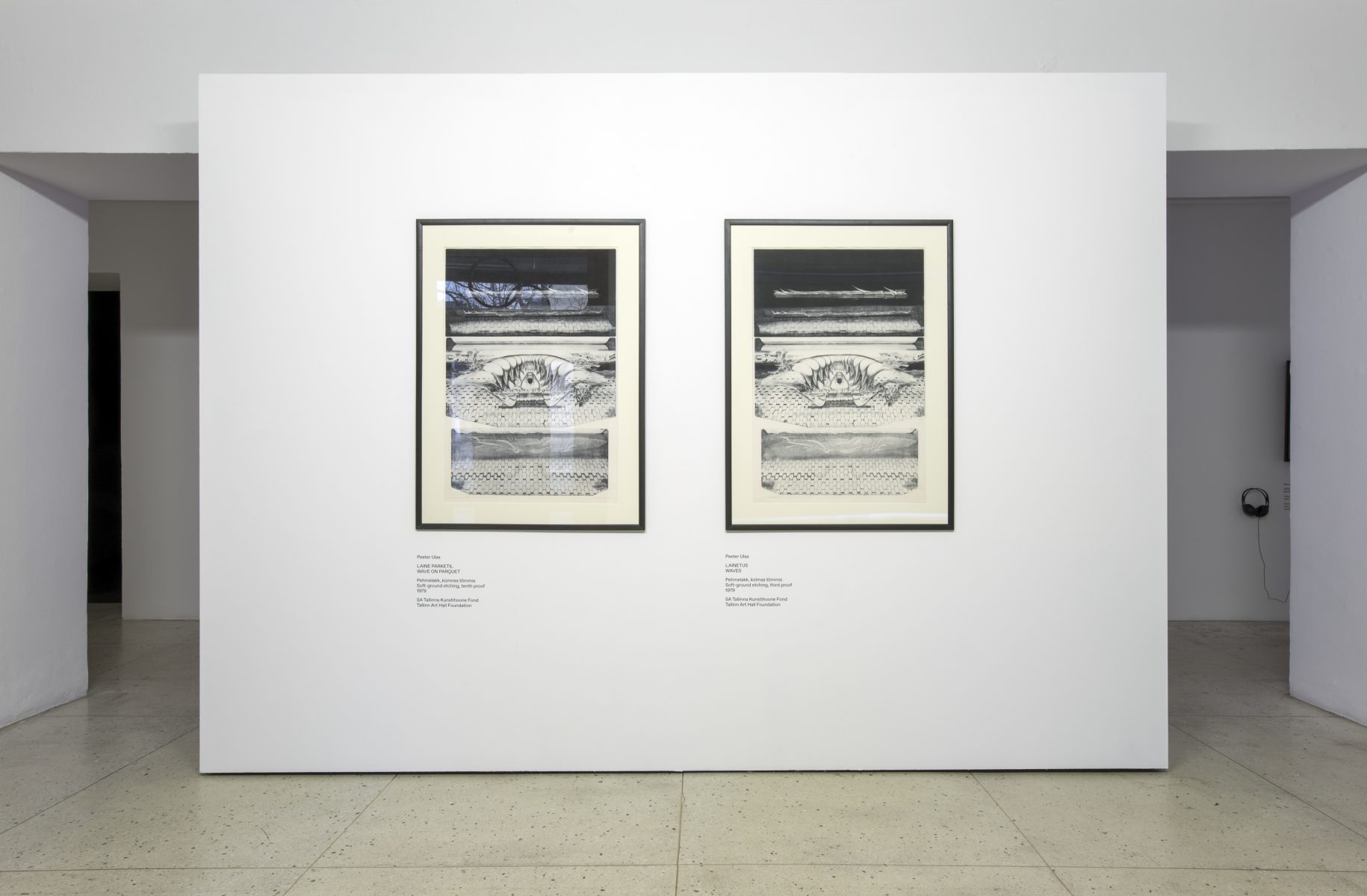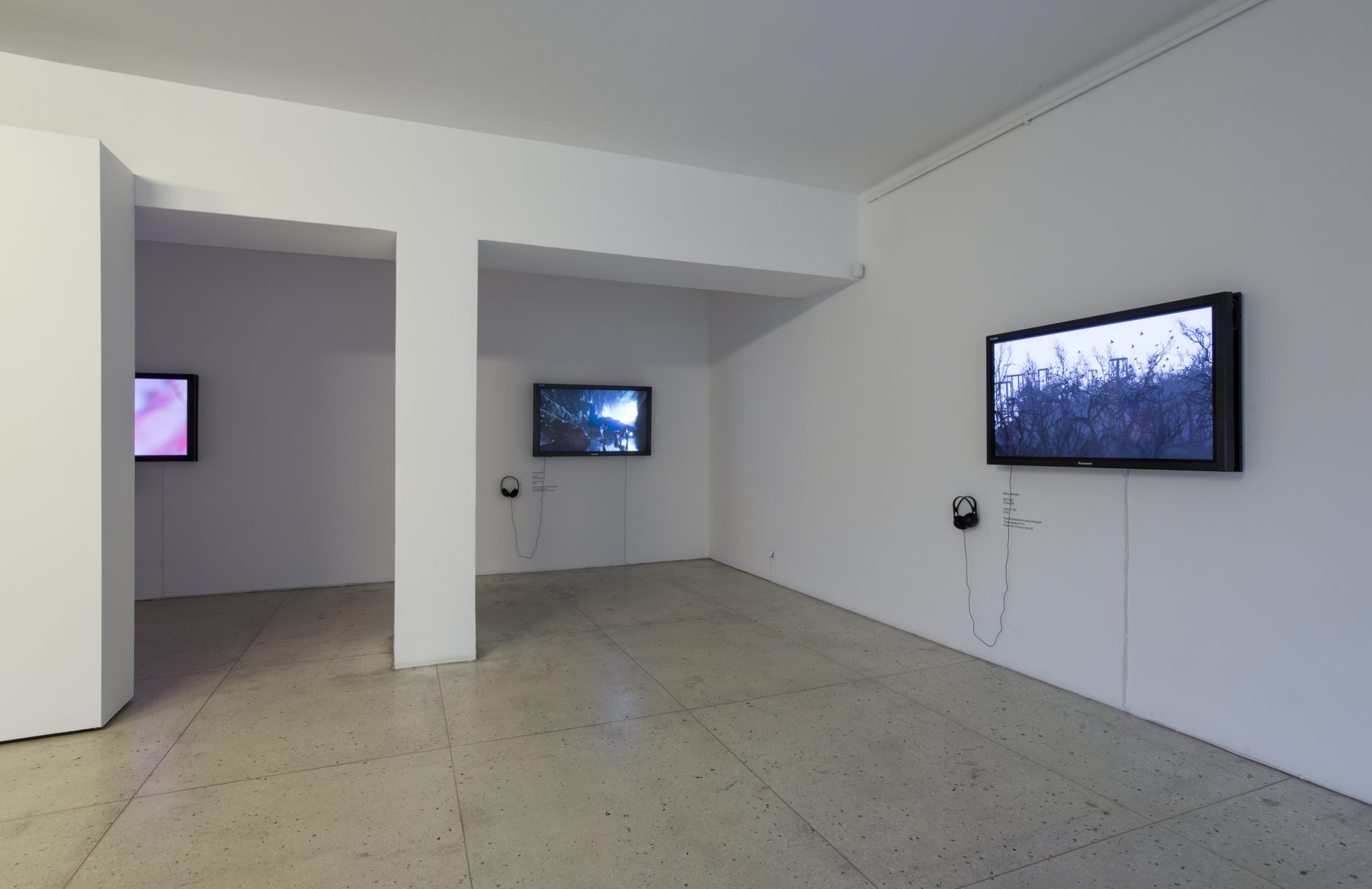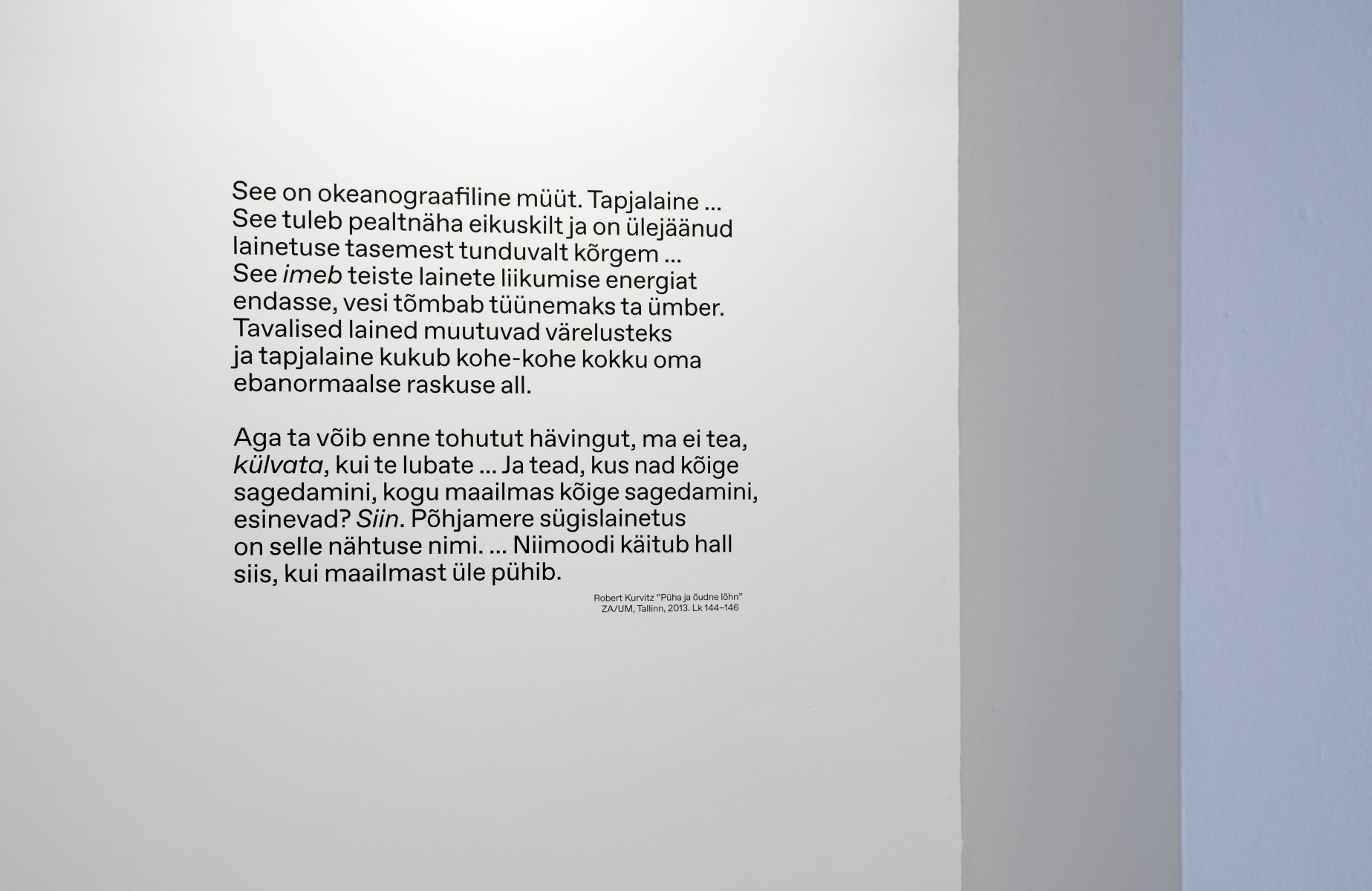Wave on Parquet
Peeter Ulas, Villu Jaanisoo and Maria Metsalu
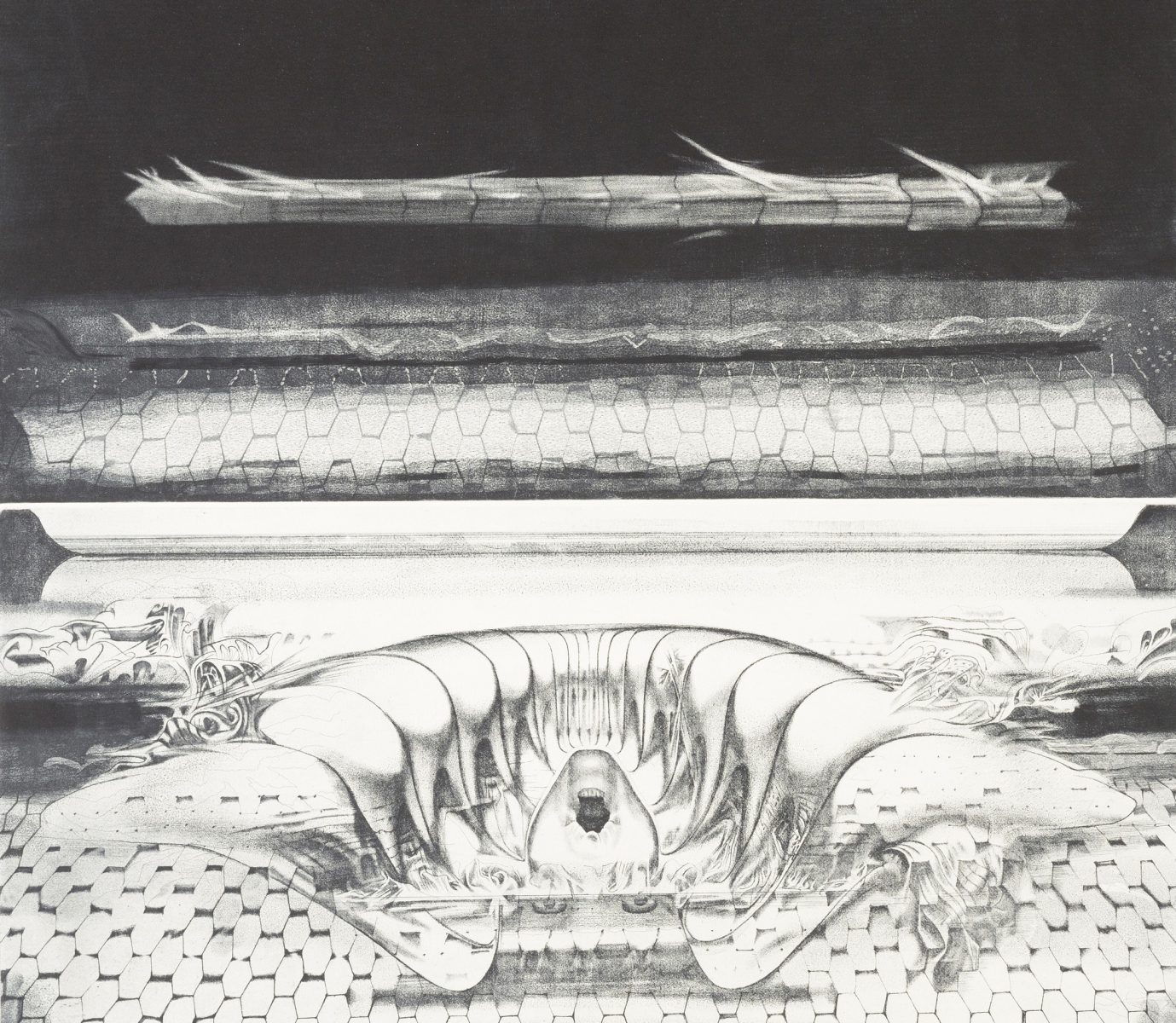
The arrhythmia expressed in the title of the print produced by Peeter Ulas in 1979 is well-suited to be the common denominator of this exhibition, in which the works of Villu Jaanisoo and Maria Metsalu are displayed along with his own. The carriers of emotion in these works are strikingly different, but the emotion itself – within the capability of the artist and changing with time interpretations – is surprisingly similar.
The third proof of Peeter Ulas’s brilliantly executed print in the vernis mou technique is just called Waves; the second copy in the Art Hall’s collection is the tenth in the series and called Wave on Parquet. The wave that rolls from the picture toward the viewer converges on an image reminiscent of a frightened woman’s face, floating above the parquet that has become loosened from its connections. Irrational and yet orderly to the last detail, the work primarily represents the powerful and unique personality of the work’s author, which is wildly expressive. As an excellent drawer and graphic artist, Ulas brought both the powerful existence of nature and the artist’s interpretive thought into his work. With both a steely gaze and striking generalisation, he also scattered primitive power into the formal artistic recurrences and rhythms. Can the message of this piece of art, which was more a bearer of the author’s wilful talent than a sign of the times, be re-contextualised?
Yes, it can, if we move from the very important means of expression and mediums of depiction – from Ulas’s paper and the images engraved thereon, from Jaanisoo’s forest installation built of innumerable neon tubes, and Metsalu’s landscapes that have been repeatedly processed using online freeware to become the genuine perceptions that have inspired all three. Something that is larger than a person or an artist not by convention, but really. Whether this is expressed by Ulas’s gust of a primal force of nature, in Jaanisoo’s recreation of this force of nature from the remnants of culture, from practically nothing; and in the video landscapes inspired by computer games devoid of humans by Metsalu, in which the heated survival instincts of the players hover above the obedience to the rules.
Something becomes irreversible, something tenaciously remains, and here a context-free quote: “In the war between perception and argument, after the visual revolution, perception comes out on top…” Mihkel Kunnus.
http://semiosalong.blogspot.com.ee/2012/03/11-mihkel-kunnus-aisting-ja-argument.html
Peeter Ulas (1934-2008) – one of Estonia’s most important graphic artists, the winner of the First Tallinn Print Triennial (1968), whose every work is unique, technically labour-intensive, and despite the relatively small size of their flat format, panoramically visionary. Two important monographs have been written about him: Boris Bernštein. Peeter Ulas. Kirjastus Kunst 1984; and Peeter Ulas, ühe põhjamaa kunstniku fantaasialend. Editor Mai Levin, articles by Mai Levin,Vappu Thurlow and others, Tallinn 2015.
Villu Jaanisoo (1963) – graduated from the Estonian Academy of Arts as a sculptor in 1989. He is the head of the Sculpture Department at the Academy of Fine Arts in Helsinki; lives and works in Pirkkala and Helsinki. Of his works, the best-known in Estonia are Gull (2006), and Chairs (2001), which is made of tires, both of which are at the Kumu Art Museum. He is the author (with Jorma Mukala) of The Broken Line, the memorial to the victims of the Estonia disaster (1996 Suure Rannavärava bastion). His sculptures are monumental and very labour-intensive, requiring collective execution and producing unique results. www.jaanisoo.com
Maria Metsalu (1990) – graduated from the School for New Dance Development (SNDO) in Amsterdam in 2016. She recently presented her solo performance of Fuchsia version 2 at the NU Performance Festival. In collaboration with Konstanet, her landscape videos, or Fuchsia version 3, which will be shown at the Art Hall Gallery, is also available online. The videos that have been mixed together from the ones available in the expanses of the internet include one that is comprised of a so-called “original image” – of the nature throbbing in the artist’s insides, the delicate pink bubbling of her vagina in the camera. This allows the main idea of the Fuchsia project i.e. that the artist herself can be treated as an exhibition, to be interpreted in a considerably more classical context: the nature within me is no less real that the nature outside me. It is even more real, more secure and maybe the only one. http://maria.metsalu.com
We thank the following for providing support for the exhibition: Cultural Endowment of Estonia, Ministry of Culture, Tallinn Department of Culture, Veinisõber, Jaagup Metsalu, Nikola Knezevic, Steve Martin Snider, Bao Tran Tran (mobilegirl), as well as art students from Finland, Tartu and Tallinn, who helped to install the exhibition.



